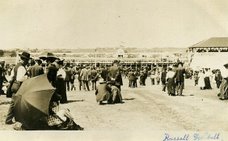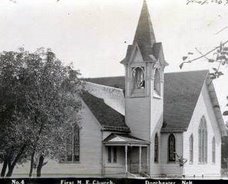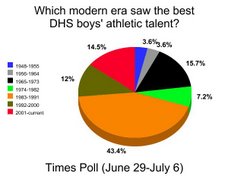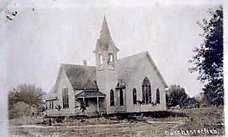 One of Dorchester's most historic -- and largest -- homes is for sale.
One of Dorchester's most historic -- and largest -- homes is for sale.
The 3,000 sq. ft. home, built in 1901 by Dorchester pioneer Colonel W.J. Thompson, sits on the corner of 10th and Lincoln Ave. and is an intriguing piece of Nebraska's past. It was also the site of Dorchester's famous Elmwood Pony Farm.
According to sources, the home is being offered by Turkey Creek Realty and lists for what seems to be a very reasonable $125,000. A recent news story noted that restored historic homes have fetched more than $10 million in Lincoln.

In 2007, the Times named the structure one of our "favorite old homes" in Dorchester, calling it "a diamond in the rough" with the potential to "be a crown jewel for the entire region."
The realtor's description of the property reads: "This historic Victorian Mansion was the home of Colonel W.J. Thompson, who operated the Elmwood Pony Farm. He raised Shetland Ponies and each year herded them overland to the Nebraska State Fair and offered rides to fair-goers as well as competing in various competitions with his ponies. Colonel Thompson's son, Wallace, started the Thompson Rodeo."
To see the online advertisement for the home, click here. (UPDATE 6/25: A friend of the Times tells us that tax incentives may be available for the purchase of historic homes. Contact the Nebraska Department of Economic Development and Kathy McKillip at 402-471-1558 or kathy.mckillip@nebraska.gov for more information.)
For our readers who may be unfamiliar, the Elmwood Pony Farm sat on present day 10th Street, between Lincoln and Fulton Av enues. Dating back to the 1890s, it was one of the largest pony farms west of the Mississippi River, according to the 1981 Dorchester Centennial history book. By the 1920s, the pony farm was home to more than 300 ponies.
enues. Dating back to the 1890s, it was one of the largest pony farms west of the Mississippi River, according to the 1981 Dorchester Centennial history book. By the 1920s, the pony farm was home to more than 300 ponies.
 enues. Dating back to the 1890s, it was one of the largest pony farms west of the Mississippi River, according to the 1981 Dorchester Centennial history book. By the 1920s, the pony farm was home to more than 300 ponies.
enues. Dating back to the 1890s, it was one of the largest pony farms west of the Mississippi River, according to the 1981 Dorchester Centennial history book. By the 1920s, the pony farm was home to more than 300 ponies.Thompson's pony farm was a popular destination for children from miles around, according to accounts of longtime residents. Children who lived in the country were even permitted to take home a pony and ride it all summer, if they agreed to keep it fed well.
Each September, Colonel Thompson took as many as 35 Shetland ponies to the Nebraska State Fair for rides. He entered many more of the animals in the fair's show contests. All of the ponies were herded overland from Dorchester to Lincoln by Thompson farm employees.
In 1930, Colonel Thompson's son, Wallace, started the Thompson rodeo. It was usually a three-day event h eld each fall, complete with fighting broncos, cowboys, clowns, trick riders, cowgirls, bull doggers, concessions, rides, dancing and "whoopee."
eld each fall, complete with fighting broncos, cowboys, clowns, trick riders, cowgirls, bull doggers, concessions, rides, dancing and "whoopee."
 eld each fall, complete with fighting broncos, cowboys, clowns, trick riders, cowgirls, bull doggers, concessions, rides, dancing and "whoopee."
eld each fall, complete with fighting broncos, cowboys, clowns, trick riders, cowgirls, bull doggers, concessions, rides, dancing and "whoopee." The Dorchester rodeo attracted many top riders from around the country, as well as local talent. At one time, more than 7,000 spectators were reported in attendance
We are hopeful that the Colonel's home goes to a worthy owner who has the resources to make the residence a "crown jewel" of Dorchester, once again.
































































